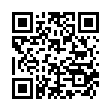|
This article is cited in 1 scientific paper (total in 1 paper)
Robotics, Automation and Control Systems
Cooperative control of traffic signals and vehicle trajectories
A. A. Agafonov, A. S. Yumaganov
Samara National Research University
Abstract:
The transportation system is one of the most important parts of the country's economy. At the same time, the growth in road traffic has a significant negative impact on the economic performance of the industry. One of the ways to increase the efficiency of using the transportation infrastructure is to manage traffic flows, incl. by controlling traffic signals at signalized intersections. One of the trends in the development of intelligent transportation systems is the creation of vehicular ad hoc networks that allow the exchange of information between vehicles and infrastructure, as well as the development of autonomous vehicles. As a result, it becomes possible to formulate the problem of cooperative control of vehicle trajectories and traffic signals to increase the capacity of intersections and reduce fuel consumption and travel time. This paper presents a method for managing traffic flow at an intersection, which consists of the cooperative control of traffic signals and trajectories of connected/autonomous vehicles. The developed method combines an algorithm for the adaptive control of traffic signals based on a deterministic model for predicting the movement of vehicles and a two-stage algorithm for constructing the trajectory of vehicles. The objective optimization function used to construct the optimal trajectories takes into account fuel consumption, travel time on the road lane, and waiting time at the intersection. Experimental studies of the developed method were carried out in the microscopic traffic simulation package SUMO using three simulation scenarios, including two synthetic scenarios and a scenario in a real urban environment. The results of experimental studies confirm the effectiveness of the developed method in terms of fuel consumption, travel time, and waiting time in comparison with the adaptive traffic signal control algorithm.
Keywords:
traffic trajectories, traffic signal control, cooperative control, deterministic model, intelligent transport system.
Received: 06.06.2022
Citation:
A. A. Agafonov, A. S. Yumaganov, “Cooperative control of traffic signals and vehicle trajectories”, Informatics and Automation, 22:1 (2023), 5–32
Linking options:
https://www.mathnet.ru/eng/trspy1229 https://www.mathnet.ru/eng/trspy/v22/i1/p5
|

| Statistics & downloads: |
| Abstract page: | 95 | | Full-text PDF : | 50 |
|




 Contact us:
Contact us: Terms of Use
Terms of Use
 Registration to the website
Registration to the website Logotypes
Logotypes







 Citation in format
Citation in format 
